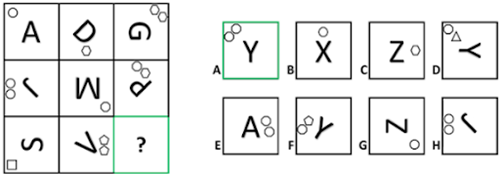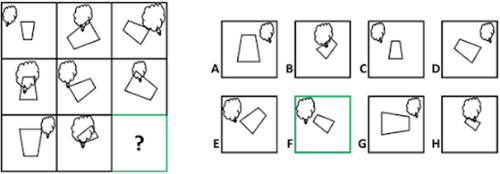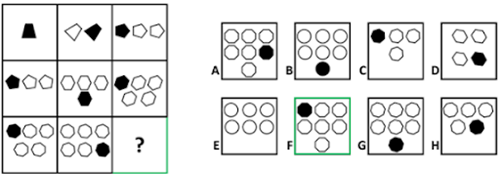
The Raven’s Progressive Matrices (RPM) Test is an assessment test designed to measure your non-verbal reasoning, abstract reasoning, and cognitive functioning.
As Raven’s Test is strictly visual, the issues of potential language barriers and religious/cultural affiliations are circumvented. Hence, Raven’s Progressive Matrices test is one of the most common measures for general intelligence and used by companies to deduce whether the interviewee has adequate cognitive skills for the job.
In the Raven Matrices Test, candidates are presented with a matrix that has a 3x3 geometric design, with one piece missing. The candidates' job is to choose the right diagram, from a set of eight answers, that completes a pattern in the matrix that you have to figure out. The questions and answers are all completely non-verbal and the matrices vary in the level of cognitive capacity required to identify the correct answer.
Many assessment candidates rightfully want to know: is the Raven IQ test accurate? Raven's Advanced Progressive Matrices allow for the scientifically valid assessment and measurement of the genetic component of mental tests as intended by J.C. Raven. At the same time, the influences of environmental factors are kept random and normally distributed. Therefore, Raven’s IQ Test gives an accurate representation of general and fluid intelligence. Completing a variety of Raven’s matrices with varying degrees of complexity will give you an accurate estimate of the IQ percentile of the population you belong to.
The calculation of the final score of Raven's Test is not shown as a percentage of correctly answered questions against the total amount of questions. This is because the complexity of the questions varies. In turn, the weighting given to successfully completing a question is different. Consequently, the most accurate way to assess the final score for Raven’s test is to rank it as a percentile against a representative (inter)national population.







